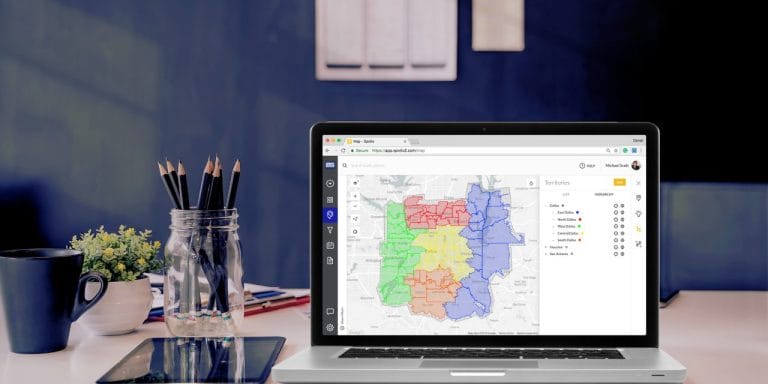Meetings have long been considered an annoying waste of time by sales professionals, but they’re an absolutely essential component of a great sales culture. The only reason to hold a meeting as an owner or manager is because you have something you feel is important enough for everyone to hear.
No one does them to keep their team from closing deals, believe me.
They’re considered such a drain because they eat an extraordinary amount of the most valuable resource – time.
This leads your team to completely sabotage the message by not taking it seriously, not showing up, twiddling their thumbs or being on their phone.
In addition to making it productive and efficient, you need to keep the audience engaged.
Get your message across in an effective way and you’ll increase the chances of promoting your objectives, motivating your team and seeing an uptick in results.
10 Musts of Effective Sales Meetings
#1 | Find Your Purpose
Why are you gathering everyone together, why is everyone here? Some of the most common topics covered are short-term and long-term sales objectives, the most recent metrics, sales competitions, and trainings. If you’re just going over numbers, there needs to be action step to take away.
Every productive meeting has a purpose beyond just what you’re going to say. This is going to define your main desired outcome.
This is the action step your team is going to take away from the sales meeting and implement into their day-to-day process. It needs to be relevant to everyone in the room. If it’s not, why are you wasting their time?
#2 | Have an Agenda
Too many managers don’t have a repeatable process for their meetings. It makes it difficult for their message to be well received, and it makes it more challenging for them to develop the topics to discuss.
Having a standard and consistent agenda gives you a formula for success each and every time. You’ll be much more focused and remain on track. An easy-to-follow agenda is like a script you give to your team.
The most important thing to build into your agenda for each meeting is training. Too many door to door sales organizations don’t provide enough training when new reps are hired, or have an ongoing training program to develop their skill set.
There’s a variety of resources available to build in a quick session. For example, you could teach your team how to use the 6 principles of persuasion in their pitch.
With an agenda, not only will you know the flow or your talking points, you’ll significantly reduce your preparation and meeting time. Be sure to keep your old agendas so you don’t repeat any creative segments and the message is always fresh.
#3 | Focus On 1 Key Issue
One of the biggest mistakes managers make in running a sales meeting is trying to build too much into the agenda. Your meeting needs to have a purpose, and that purpose needs to be focused on one central thought or idea.
Don’t try to cover everything, there’s not enough time. When you get laser focused on one specific thing, it allows you to really dig into the importance of the topic you’re discussing. By talking about one point instead of five, you control the flow of the conversation and present a more clear and concise message.
#4 | Start With An Energizer
Who the hell really likes meetings? Probably only the slackers who want to sit around do nothing – AKA, the people who are going to screw up your meeting.
Your best shot at grabbing their attention, or anyone else’s, is to start your meeting with something that gets the blood flowing. Start with something that’s fun, go over a current contest to get everyone jabbering back and forth, or hand out a few rewards.
The energizer can be anything from a trivia game to a funny story. You could even talk about a sales movie and what you learned from it or go old school high school coach and do some jumping jacks.
#5 | Keep It Simple Stupid
Ahhh… The ole K.I.S.S. rule. This is an essential in proper sales meetings. Anything you build into your agenda should be asked the following question:
“Does this item need to be in the meeting or could it be done outside the meeting or as pre-work?”
Follow these 4 steps to keep your sales meetings as simple as possible:
1. Make the pace of the meeting fast, but thorough
2. Create the right atmosphere to ensure it’s fun
3. Add value by helping the team better execute on a key sales skill
4. Share content on a regular basis
Don’t over complicate things and get off topic. Tell them what needs to be told and get back to work. Everyone will thank you for it.
#6 | Three Rules For Individual Updates
Who doesn’t want to just pretend they’re Toby Keith and say, “I wanna talk about me!”
Am I right, or am I right!
It’s great for people to be involved, feel important and be heard. The topics need to be small and the answers need to be timed. While everyone loves themselves, most don’t like hearing about it, especially if it drags on.
Use these 3 rules to ensure they don’t take up too much of the meeting:
- Set time limits
- Create different themes around successes, like key learnings / future focus
- Know when to take the issue offline
#7 | Motivate & Reward / Share Successes
Science proves how to motivate your sales team and it’s a key component of effective meetings. You have to build motivation into every meeting. Sales reps have a tough challenge in the field and need to feel like they’re being recognized.
Think about sorting the rewards into different categories. You can make them fun, competitive, team-based, recognition-based or even externally focused, such as getting input or recognizing someone outside of the sales team.
Motivating salespeople also makes them feel like they’re part of the meeting. They feel like you’re speaking right to them. Sharing successes is a great way to keep them performing at a high level.
#8 | Capability Activity
Every sales meeting needs to be designed to challenge your team’s skill set to keep them at the top of their game. Capability activities can focus on prospecting, networking, lead generation, client meetings, presenting solutions or closing.
The capability activity is all about the sales rep’s ongoing development. This is the key to creating value at the meeting.
#9 | Allow For Discussion & Input
A sales presentation without input from the customer isn’t much of a sales pitch. The same can be said for any sales meeting.
You want active engagement from everyone in the room so that the energy level remains high and people don’t fall asleep from your boring rambling. You also want them engaged so that they’re not just hearing the message, but processing it. Allow for discussion and encourage it.
#10 | Start & End On Time
If your sales reps have to respect their customer’s time, you have to respect theirs as a sales staff. Think of your sales meeting as a reflection of a sales presentation and set the standard for how it should go. Not starting and ending on time sends a signal to your team that you don’t value their time and what they have to do.
As it is, field sales reps only spend 22% of their time actively selling, while 23% is spent on administrative tasks. Don’t keep them from working in the field any less than they already are. Check out how you can double your team’s selling time.
Final Words on Effective Sales Meetings
Take advantage of the opportunity to use meetings as a way to provide ongoing training. It’s the perfect time when you have everyone together and you need to be invested in developing your team’s skill set.
Mark Cuban said:
“The greatest competitive advantage is knowledge”
Use these 10 tips to present a better message and keep everyone engaged. You’ll be surprised at how much time you save by having a standard agenda, and the lack of people trying to skip out the second you start talking.
______
Questions or comments? Contact SPOTIO at [email protected] or comment below.
SPOTIO is the #1 field sales acceleration platform to increase your revenue, maximize your profitability, and increase your team’s productivity.
Want to see a product demonstration? Click here to see how SPOTIO can take your sales game to the next level.




